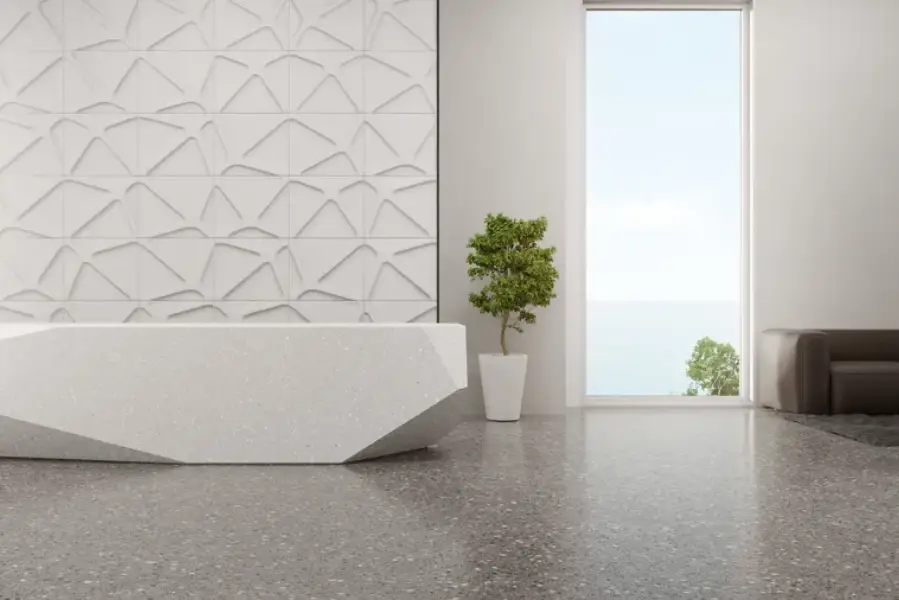Understanding the Unique Characteristics of Each Type
Choosing the right stain for your concrete surfaces can make a big difference in their appearance and longevity. Two common types of stains are acid-based and water-based. Understanding how they differ is crucial to making an informed decision. This article will break down these differences, helping you determine which option best meets your needs.

Acid-Based Stains: A Deep Dive
Acid-based stains react with the minerals in concrete, creating a unique, mottled look that becomes part of the surface itself. These stains are known for their durability and ability to create rich, earthy tones. They penetrate deeply into the concrete, resulting in a permanent color that won’t peel or fade over time.
Water-Based Stains: A Versatile Choice
Unlike acid-based options, water-based stains do not rely on chemical reactions. Instead, they provide a range of colors through pigments. This allows for more control over the final appearance. Water-based stains are ideal for those looking for variety and customization without the risk of unpredictable results from chemical reactions during the Concrete Staining process.

Application Process Differences
Applying acid-based stains involves a chemical reaction that requires careful handling and protective gear due to the acids involved. On the other hand, water-based stains are generally safer and easier to apply. Whether you’re undertaking a DIY project or hiring a professional, understanding these application differences can help you choose the right approach for Concrete Staining projects.
Environmental Considerations
If environmental impact is a concern, water-based stains offer a greener alternative. They emit fewer volatile organic compounds (VOCs) compared to acid-based stains. This makes them a more environmentally friendly choice, contributing to improved indoor air quality and reduced environmental footprint.
Color Variability and Consistency
When choosing between acid and water-based stains, consider your preference for color consistency. Acid-based stains often result in varied, natural-looking tones, ideal for rustic or aged appearances. Conversely, water-based options allow for more precise color matching and uniformity across large areas, providing greater control over the final aesthetic.
Cost Implications
The cost of staining depends on several factors, including the type of stain used and the size of the area covered. Generally, water-based stains tend to be less expensive upfront. However, if you’re looking for long-term durability and depth of color, investing in acid-based products might be worthwhile despite their higher initial cost.
Maintaining Your Stained Surfaces
Maintenance varies depending on the stain type. Acid-stained surfaces require regular sealing to preserve their vibrancy and protect against wear. Water-based stained surfaces might need reapplication sooner due to potential fading but are generally easier to touch up or change.
Making Your Decision
Your choice between acid and water-based stains should align with your project’s goals. If you’re aiming for a distinct, antique finish with lasting durability, acid-based might be your go-to. For versatility and ease of use, water-based could be better suited to your needs.
Contact Us Today!
Reach out at (302) 775-1939 for expert advice on your next project. Located in Lincoln, DE, our team at TR-Brothers Concrete LLC specializes in providing tailored solutions for your concrete staining needs. Explore our services and find the perfect match for your design vision.
